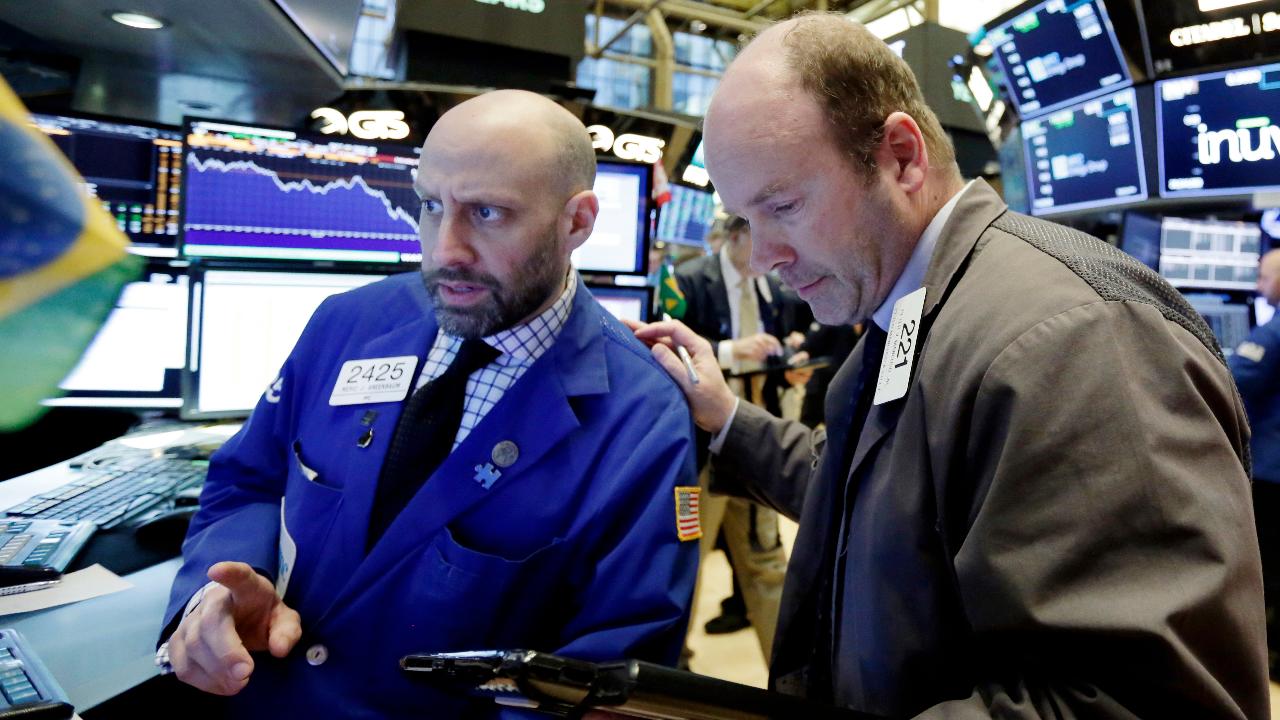Debt in America: History has taught us something
When credit goes bad, typically recessions and sharp market downturns follow. Debt levels have a history of rising going into, and sometimes causing, an economic crisis.
Recent headlines about the amount of outstanding debt in America -- for consumers and corporations --have spooked economy watchers. Many pundits have cited a "déjà vu feeling" with respect to debt levels in the lead-up to the global financial crisis.
Have debt levels grown too much, too soon? Upon closer look, there is not exactly cause for immediate concern. Here is a breakdown.
Borrowers wising up
One observation that caught our eye was how vigilant the consumer has been about deleveraging over the past decade. Household debt as a percentage of GDP is now well below levels recorded ahead of the Great Recession. Growth in debt, at the household level, has been in-line with income growth and GDP growth, despite all the headlines about auto loans and student debt loans reaching new highs.
The reality is that most borrowing has been done by borrowers with high credit scores, leading to low default rates. Though student loan and auto loan delinquencies rates in the subprime (lowest rating) category are elevated, they are moderating and while worth monitoring, are not likely to drive the country into a recession.
Record level corporate debt: A mixed bag
The corporate side of the equation is where we noticed some possible red flags, although it isn’t necessarily doom and gloom. It’s been well reported that corporate debt is on the rise. There was $9.6 trillion in outstanding corporate debt at the end of the third quarter of 2018, up substantially from $5.5 trillion 10 years ago, a 75 percent increase.
Corporate debt as a percentage of GDP (a measure we aren’t big proponents of, but that is a conversation for another time) is at an all-time high, approaching 46 percent (the last peak was 45 percent in 1Q 2009).
But the real question that must be answered revolves around the quality of this corporate debt. There has been a deterioration of the ratings of corporate debt. Much of the investment-grade debt in the market is rated in the lower rungs on the credit scale. In fact, ratings agency Moody’s described the amount of investment-grade debt outstanding as “riskier now that it was prior to each recession since 1981 and possibly all downturns through late 1940.”
Despite the obvious quality concerns, amid rising debt levels, defaults have remained remarkably low. Improvements in profitability, lower tax rates and strong economic tailwinds have likely been drivers of this trend. However, a swift change in that environment could put corporation debt at the center of a new crisis. That said, not all corporate balance sheets are the same.
Upon a closer look, it turns out that large capitalization companies (members of the S&P 500 index) are best positioned to weather a credit-induced storm. Their ability to pay off the debt on the books is much better than it was heading into the financial crisis. The debt load for S&P 500 companies relative to their profits is roughly half of where it was in 2009.
A combination of the Tax Cuts and Jobs Act of 2017 and other fiscal stimuli has these large cap companies sitting on 63 percent more cash on hand now than they did at the end of 2016. What’s more comforting is the fact that they wouldn’t need to use much of that cash to pay off debt in the event of a slowdown (thanks to their solid profitability.)
Small caps raise an eyebrow
When we looked at small cap companies, those in the S&P Small Cap 600 index, the opposite is true. While smaller business similarly loaded up on debt in the low interest rate environment of the past decade, their ability to pay down debt quickly has somewhat eroded.
Their debt-to-profits ratio has more than doubled since 2009, and while these companies have more cash than they did in 2016, their cash balances haven’t expanded nearly as fast as their large cap counterparts (only 8 percent higher than at the end of 2016). Given the absence of cash stockpiles, these companies are not as well positioned to make the types of investments that larger firms can. They also wouldn’t be able to pay down debt as easily in a weaker economy.
The bottom line
At a quick glance, it is easy to see that the country is more flush with debt than in the past, but putting it into context is important. The consumer and large corporations have been more responsible with taking on debt than the headlines suggest.
CLICK HERE TO GET THE FOX BUSINESS APP
Smaller business on the other hand, have leveraged up their balance sheet to risky levels. Ultimately, there’s one reality about history, it repeats itself. So we’ll be keeping an eye on debt as a leading indicator of good or bad things to come.
Lindsey Bell is an investment strategist at CFRA Research. She brings a broad perspective given her background working in investment banking, equity research and on the buy-side for a charitable trust. Lindsey is a frequent commentator on FBN and FNC.
Mitch Roschelle is a partner and business development leader at PwC. He has over three decades of experience advising clients worldwide. He’s a frequent commentator on FBN and FNC on business trends, market behavior, housing, the economy and policy matters in the public and private sectors.




















